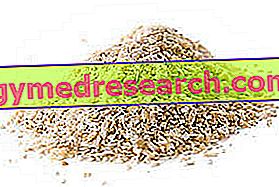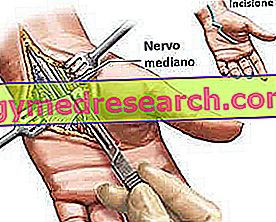What is that
Oat bran is a waste from the refining of OAT (usually Avena Sativa ), a cereal grown for more than 4, 500 years in Europe and the Middle East.

As oats cannot be used in bread making, as it is gluten-free, its nutritional quality is comparable - and in some ways superior - to that of wheat ... but the bran?

| Nutritional composition of wheat bran per 100 grams of edible portion : | Nutritional composition of oat bran per 100 grams of edible portion : | ||
 | |||
| Power | KCal | 206 | 246 |
| water | g | 8.2 | 6.6 |
| proteins | g | 14.1 | 17.3 |
| Lipids | g | 5.5 | 7.0 |
| Saturated | g | 0.89 | 1:33 |
| Monounsaturated | g | 0.87 | 2:38 |
| polyunsaturated | g | 2.82 | 2.77 |
| B.C. Linoleic | g | 2.63 | 2.65 |
| Ac Linolenico | g | 00:19 | 00:12 |
| Cholesterol | mg | 0 | 0 |
| carbohydrates | g | 26.6 | 27.4 |
| Simple | g | 3.8 | 1.5 |
| Total fiber | g | 42.4 | 15.4 |
| soluble | g | 1.3 | ND |
| insoluble | g | 41.1 | ND |
| Iron | g | 12 | 5.4 |
| Magnesium | mg | 550 | 235 |
| Thiamine | mg | 0.89 | 1:17 |
| Niacin | mg | 29.6 | 0.93 |
| Tocopherol | mg | 1.6 | 0.1 |
Wheat Bran or Oat Bran?
The first difference between the two brans concerns the overall energy supply, as the oat bran has a caloric potential of 20% higher than that of wheat.
With regard to macronutrients, oatmeal has a higher amount of lipids and proteins than the other, but at the same time higher levels of saturated and monounsaturated fat are recognized, while polyunsaturates are almost superimposable to wheat bran; on the contrary, simple carbohydrates are present in smaller quantities in oatmeal.
With regard to iron and magnesium, wheat bran supplies DOUBLE quantities compared to oat, while for vitamins the comparison seems much more complex. Wheat bran has greater amounts of Tocopherol, while oat bran contains more important doses of Thiamine, but the difference between the two products is the amount of Niacin: from the data it seems that wheat bran contains more than 30 times in addition, errors in the laboratory or printing are not excluded. Last but not least, the difference in the intake of dietary fiber; also in this case the wheat boasts almost triple quantities compared to the oats, even if the tables do not provide the soluble / insoluble breakdown detail of the latter. However, oats are traditionally considered a good source of soluble fiber, in this sense more generous than other cereals; it is therefore probable that oat bran also contains percentages of soluble fiber that are clearly higher than wheat bran.
Oat bran is a product that can replace or supplement wheat bran; certainly, by containing lower amounts of fibers it is more suitable for those who DO NOT require significant fiber supplementation in order to regularize intestinal activity.
- Foods rich in insoluble fiber (wheat bran): retain water and increase fecal mass by accelerating intestinal transit → indicated in the case of constipation and constipation
- Foods rich in soluble fibers (oat bran): they form a sort of gelatinous and viscous mass → increase the sense of satiety, reduce the absorption of lipids and food glucides, improve glycemic control
Laxative biscuits with oat bran
With its soluble fiber, oat bran is one of the main ingredients of these laxative biscuits, delicious and at the same time useful for awakening the lazy intestine in case of occasional constipation.
Laxative biscuits without butter
X Problems with video playback? Reload from YouTube Go to Video Page Go to Video Recipes Section Watch the video on youtube



